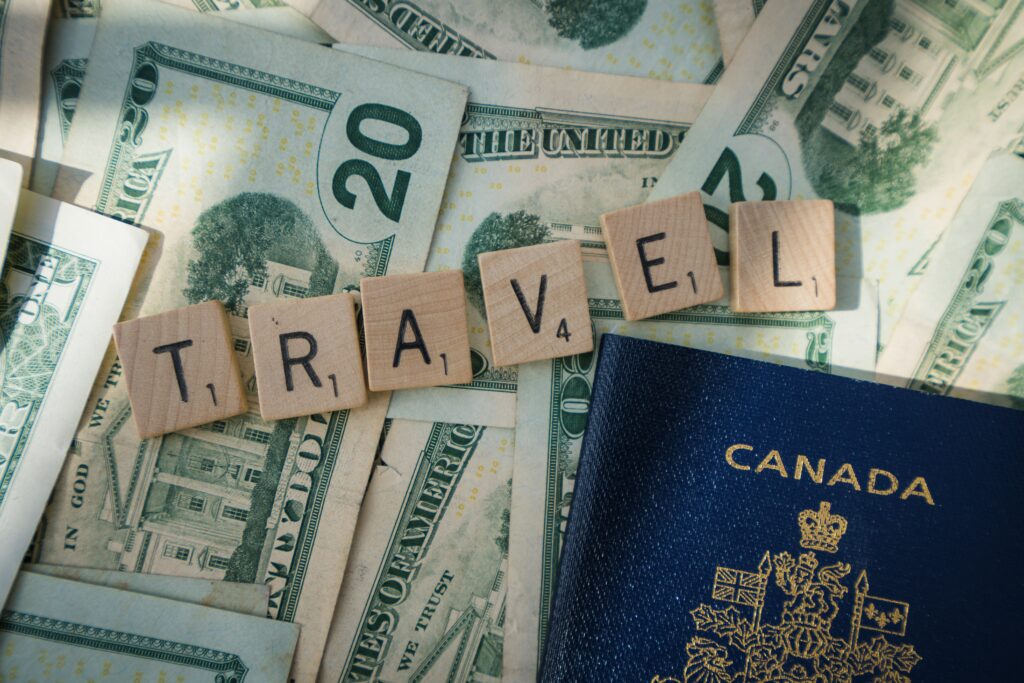How To Save For A Vacation Without Breaking The Bank

Want to jet off somewhere amazing without watching your bank account implode? 🙂 I get it. The thought of a vacation makes your heart race, but then reality hits. You don’t have the cash sitting around.
Here’s the truth: you absolutely can save for that dream trip, and I’m going to show you exactly how to make it happen without sacrificing your entire lifestyle.
After years of helping people build financial plans, I’ve seen what works and what doesn’t. The difference between people who take amazing vacations and those who don’t usually isn’t how much money they make. It’s their strategy.
So, let’s talk about a practical, stress-free approach to building your vacation fund.
How To Save For A Vacation In 10 Easy Steps
Having an unforgettable, fun-filled vacation doesn’t mean you need a huge bank account. The key is being smart about how you save and plan for it. With a little foresight, discipline, and practical strategies, you can turn your dream getaway into a reality without breaking the bank.
Here are some helpful ways to save for a vacation and make the most out of your trip.

1. Decide When To Travel
Assess Your Current Financial Situation
Before you pick a date, take a hard look at where you stand financially. If you’re carrying credit card debt or high-interest loans, now might not be the right time to book a trip. Tackling one financial goal at a time works better than juggling multiple priorities.
Get honest with yourself. Does your emergency fund have at least three months of expenses? Are you current on all your bills? If you answered no, focus on those first. Your vacation will still be there once you’ve built a solid foundation.
Strategic Timing Saves Real Money
Once you’re ready to travel, picking the right time matters more than most people realize. Traveling during off-season periods cuts costs dramatically. Hotels offer lower rates, flights become cheaper, and attractions are less crowded.
Here’s the thing about flight timing: Tuesday and Wednesday departures typically cost 15 to 25 percent less than weekend flights. Airlines price accordingly because fewer people book mid-week travel.
Similarly, checking into hotels on Sundays (rather than Fridays or Saturdays) puts money back in your pocket. Airlines and hotels operate on revenue patterns. Understanding these patterns means you pay less.
2. Pick A Destination
Choose Based on Your Budget and Interests
Your destination choice is probably the single biggest factor determining your total vacation cost. Some places offer incredible experiences without massive price tags, while others drain your wallet fast.
Think about what actually excites you. Are you a beach person, a city explorer, or someone who loves mountains and hiking? Once you know your vibe, research destinations that match your interests AND your budget. National parks offer free or low-cost entry.
Cities like New Orleans have incredible food and culture without resort pricing. Beach vacations in the Caribbean cost way more than beach vacations in Florida or Mexico during certain seasons.
Make It a Family Decision
If you’re traveling with family or friends, everyone should have input on the destination. This creates buy-in and ensures nobody feels stuck going somewhere they don’t want to be. When people feel heard in the planning process, they’re more excited about the trip overall.
The goal isn’t to pick the most expensive or Instagram-worthy location. It’s to find somewhere that creates memories your group will genuinely enjoy. Budget-friendly doesn’t mean boring. Some of the best vacations happen at places that cost the least.
3. Determine The Cost Of The Trip
Break Down Every Expense Category
Sit down and actually write out every expense you’ll face. Most people skip this step and then wonder why they run out of money mid-trip. Being detailed here prevents financial stress later.
Start with transportation. What’s your flight cost per person? Will you rent a car or use public transit? Do you need train passes? Move to accommodation. How many nights, and what price range are you comfortable with? Then add daily expenses like food, activities, attraction fees, and tips.
Don’t forget often-overlooked costs like travel insurance, baggage fees (if flying budget airlines), parking, tolls, and currency exchange fees. Plan for a 10 to 15 percent buffer for unexpected costs. Something always comes up.
Maybe you want to splurge on one amazing dinner, or an activity costs more than expected. Having cushion prevents stress.
Create a Realistic Example Budget
Let’s say you’re planning a week-long trip for two people to a mid-range destination. Your flight costs $400 per person ($800 total). Your Airbnb runs $120 per night for six nights ($720). You budget $30 per person daily for food ($420 total).
Activities and entertainment cost $200. That’s roughly $2,140 total. Add your buffer of $250 to $300 for safety, and you’re looking at $2,400 to $2,440.
Your numbers will be different, but this framework shows how to think about it. Once you know your total, everything else becomes easier to plan.
4. Build A Vacation Budget
Use Budgeting Tools to Organize Your Plan
A written budget keeps you accountable and shows you exactly what you’re working toward. Apps like YNAB (You Need A Budget), EveryDollar, or Mint let you create dedicated vacation categories and watch your progress.
These tools aren’t just for tracking. They show you where money goes, highlight spending patterns you didn’t realize existed, and keep you motivated as the number climbs closer to your goal. Visual progress is powerful. When you see that bar filling up, you feel like the goal is actually achievable.
Create Visual Accountability
Some people use spreadsheets. Others print out their goal amount and cross off sections as they save. Find whatever method keeps you engaged. The best budget is one you’ll actually check regularly and update.
Set up notifications in your budgeting app so you get reminded when you hit savings milestones. Celebrating small wins keeps your momentum going strong.
5. Open A Designated Savings Account
Keep Your Vacation Fund Separate
Your vacation money needs its own dedicated account. Period. Mixing vacation savings with your regular checking account is the fastest way to watch it disappear. You’ll see that balance and think “oh, I have extra money,” then grab it for something else.
Open a separate high-yield savings account at a bank like Marcus, Ally, or Capital One 360. These accounts currently offer 4 to 5 percent annual interest. Your money grows while you save. It’s not life-changing interest, but it’s better than earning nothing in a regular savings account.
Use Sub-Accounts or “Buckets”
Many banks let you create multiple savings accounts or sub-accounts under one login. Some call them buckets. Whatever the name, this feature is gold for goal-based savers. Having a visual separation between your vacation fund and your emergency fund keeps temptation at bay.
Out of sight, out of mind really works. When your vacation money sits in a completely separate bank, you remember it’s for a specific purpose. You’re less likely to tap it for a spontaneous purchase.
6. Increase Your Income To Boost Savings
Explore Side Hustle Opportunities
Here’s the reality: if your regular paycheck barely covers expenses, saving aggressively becomes nearly impossible. Adding extra income is one of the fastest ways to accelerate your savings timeline. The right side hustle takes advantage of skills you already have.
What are you genuinely good at? Consider freelance writing on Fiverr or Upwork if you like writing. Try online tutoring through Tutor.com if you’re knowledgeable in certain subjects.
Pet sitting through Rover works if you like animals. Selling items on eBay or Facebook Marketplace takes minimal effort if you have unused stuff lying around.
The key is picking something that doesn’t feel like punishment. If you hate the side hustle, you’ll quit. Pick something aligned with your interests or abilities, even if it pays slightly less.
Set a Realistic Monthly Savings Target
Beyond your main income, establish a concrete minimum you’ll contribute to vacation savings monthly. Maybe it’s $150. Maybe it’s $350. The amount depends on your situation, but make it specific and achievable.
Write this number down. Make it your non-negotiable target. When you hit it, celebrate. When you exceed it with side hustle earnings or other income, that’s bonus momentum. Treating it like a commitment you make to yourself builds discipline.
7. Take Advantage Of Financial Windfalls
Redirect Unexpected Money Automatically
Tax refunds, work bonuses, birthday gifts, inheritance money. These windfalls feel like free money because they weren’t part of your regular budget. Use this psychological advantage by immediately routing windfalls to your vacation fund.
The moment money hits your checking account, transfer it. Don’t give yourself time to think about other things you could buy. That psychological commitment of moving it right away means you’re way less likely to change your mind later.
Maximize the Impact
One client I worked with received a $1,500 tax refund. She transferred the entire amount to her vacation fund immediately. That single action cut six months off her timeline. Had she left that money in her checking account, it would’ve been spent on a hundred different things within weeks.
Think about all the potential windfalls in your year. Estimate what you might receive and factor it into your timeline. If you’re expecting a $2,000 bonus, that’s serious accelerator fuel for your vacation fund.
8. Embark On No-Spend Challenges
Understand What a No-Spend Challenge Really Is
A no-spend challenge is exactly what it sounds like. You commit to not spending money on discretionary categories for a set period. This might be one week, two weeks, or a full month. The goal is to build spending awareness and redirect that money to your vacation fund.
This isn’t about deprivation or making yourself miserable. It’s about being intentional. During your challenge week, you still buy groceries. You still pay bills. You just skip the coffee runs, restaurant meals, impulse shopping, and entertainment subscriptions.
Make It Achievable
Pick a challenge duration you know you can actually stick with. If you’ve never done this before, start small. A one-week no-spend challenge is way better than committing to a month, failing after two weeks, and then giving up on the whole idea.
During your challenge, track how much money you would have normally spent. That number is surprisingly eye-opening. Most people discover they can easily redirect $50 to $200 per week just by pausing discretionary spending. Do this once a month, and your vacation fund fills up way faster.
9. Leverage Credit Card Rewards
Use Rewards Strategically, Not as an Excuse to Spend
If you have a credit card with cash back or travel rewards, you can put it to work for your vacation. Some cards offer 3 to 5 percent cash back on groceries or dining. Others give airline miles or hotel points.
Here’s the important part: only use rewards as a bonus if you were going to spend the money anyway. Don’t buy things just to earn points. That defeats the entire purpose and costs you more money overall.
Deposit Rewards Into Your Vacation Fund
Every time cash back hits your account, transfer it directly to your vacation savings. Don’t let it sit in your checking account as general money. Route it specifically to the vacation goal. Over months, this passive income stream adds up to meaningful amounts.
Make sure you pay your credit card balance in full every month. Interest charges completely negate any rewards you earn. If you carry a balance, credit cards become expensive debt, not a savings tool.
10. Sell Unused Items
Declutter and Generate Cash
Look around your home. I bet you have things you don’t use anymore. Clothes that don’t fit. Electronics gathering dust. Books you’ll never read again. Turning these items into vacation fund contributions serves double duty: your space becomes cleaner and your savings grow.
Price items competitively. Check what similar items sell for on Facebook Marketplace, eBay, or Craigslist. Don’t overprice just because you think something’s worth more. It’s only worth what someone will actually pay.
Choose Your Selling Platform Wisely
Different platforms work for different items. Facebook Marketplace is great for furniture and bulk items because local pickup avoids shipping. eBay works better for collectibles or items with a specific buyer base. Consignment shops take clothing and designer items. Garage sales move volume fast if you’re patient with foot traffic.
Bundle similar items together when possible. Someone scrolling might buy five items from you rather than one. The total dollars add up faster.
Final Thoughts
Saving for a vacation doesn’t require being rich or giving up your financial stability. What it does require is a clear plan, realistic timeline, and consistent action. The people who actually take vacations aren’t smarter or wealthier they simply commit to a strategy and follow through.
Start today by picking a few actionable steps from this guide, reduce unnecessary spending, boost your income where possible, and automate your savings. Your dream trip isn’t just a fantasy anymore it’s a goal with a plan behind it, and your future self will thank you for taking these steps now.









